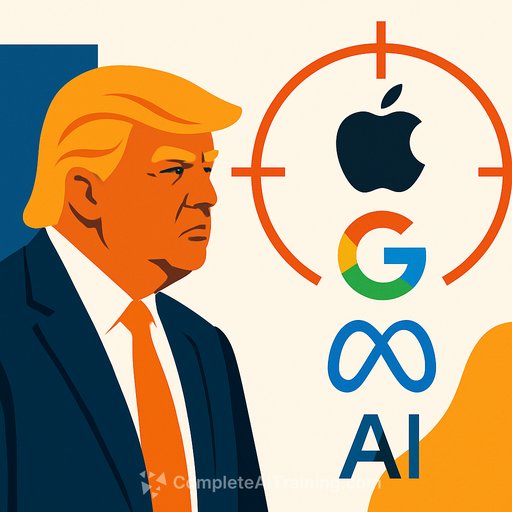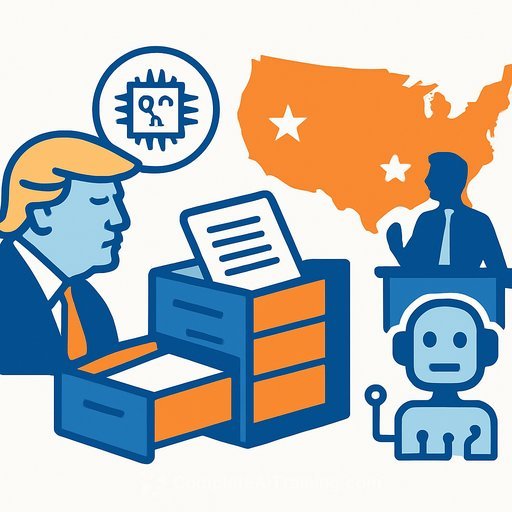Tech Companies Face New AI Regulations Under Trump
Tech companies aiming to sell AI technology to the federal government now face a unique regulatory challenge: proving their chatbots aren’t “woke.” President Donald Trump’s new plan to counter China’s AI ambitions includes cutting regulations and embedding American values into AI tools used at work and home.
One of the three AI executive orders signed on July 23 focuses on “preventing woke AI in the federal government.” This marks the first time the U.S. government has explicitly tried to influence the ideological behavior of AI. Major AI providers like Google’s Gemini and Microsoft’s Copilot have remained mostly silent on this directive, which is still under review before becoming part of official procurement rules.
Industry Response and Challenges
While the broader AI plans from the Trump administration have been welcomed by much of the tech sector, the anti-woke order drags the industry into a culture war. Civil rights advocate Alejandra Montoya-Boyer points out the significant impact this will have, especially since companies are already complying with other Trump administration directives.
This new order pushes tech companies to move away from years of work aimed at reducing racial and gender bias in AI systems. Montoya-Boyer emphasizes that “there’s no such thing as woke AI,” only AI that either discriminates or works fairly for all people.
Shaping AI language models is complex. These models are trained on vast internet data, reflecting the biases and contradictions embedded in human language. Jim Secreto, a former deputy chief of staff at the Commerce Department, notes that compliance with this order will be difficult because of the randomness and biases naturally present in AI outputs.
What the Order Targets
Trump’s order targets the efforts within tech companies to integrate diversity, equity, and inclusion (DEI) ideologies into AI. It specifically calls out concepts such as critical race theory, transgenderism, unconscious bias, intersectionality, and systemic racism as “destructive” and aims to exclude them from AI used by the federal government.
The directive has drawn comparisons to China’s strict AI policies, which include pre-approval and content filtering to align with Communist Party values. However, the Trump administration’s approach is less direct, relying on companies to disclose internal policies to demonstrate ideological neutrality.
Secreto explains that this softer method uses federal contracts as leverage, pressuring companies to self-censor to maintain government business. This could lead to significant shifts in how AI developers build and present their products.
Industry Reactions and Political Implications
The order’s emphasis on “truth-seeking” AI echoes the rhetoric of Elon Musk, whose xAI company released the Grok chatbot with a similar mission. Despite this, it’s unclear if Grok or competitors will benefit under the new rules.
Neil Chilson, a former Federal Trade Commission chief technologist, argues that the order is relatively light-touch. It does not ban ideological agendas but requires disclosure of any intentional guidance in AI models, distinguishing it from China’s stricter censorship.
So far, companies have responded cautiously. OpenAI says it is awaiting detailed guidance but believes ChatGPT’s objectivity aligns with the directive. Microsoft declined to comment. xAI praised Trump’s AI announcements but didn’t address the procurement order directly. Other major players like Google, Anthropic, Meta, and Palantir have not publicly commented.
Background and Controversies
The ideas behind this order have circulated for over a year among Trump’s AI adviser David Sacks and conservative Silicon Valley venture capitalists. Their criticism peaked after Google’s February 2024 AI image generator produced historically inaccurate images, including portrayals of founding fathers as Black, Asian, and Native American men.
Google explained these errors were due to efforts to counteract biases favoring lighter-skinned people. However, Trump allies accused Google engineers of intentionally embedding a social agenda. Venture capitalist Marc Andreessen claimed these policies were deliberately encoded into AI systems.
Sacks credited conservative strategist Chris Rufo, known for opposing DEI initiatives, for helping draft the order. Rufo identified DEI ideologies within AI systems' operating frameworks, influencing the government’s stance.
Concerns Over Ideological Neutrality
Some experts agree Biden’s promotion of DEI may have gone too far but worry that Trump’s order sets a risky precedent. Ryan Hauser from the Mercatus Center argues that true ideological neutrality in AI is unachievable. He fears companies will simply tailor AI outputs to meet the political demands of the moment.
For government professionals, this evolving regulatory landscape means increased scrutiny of AI tools used in federal work. Understanding these developments is crucial for procurement, compliance, and ensuring AI systems meet the new standards.
Those interested in expanding their knowledge on AI applications and policies can explore relevant courses and certifications at Complete AI Training.
Your membership also unlocks:






